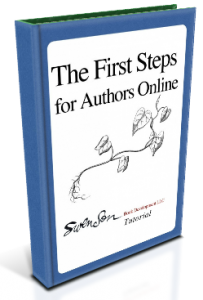Before the advent of Facebook, Twitter, or LinkedIn, an author only needed to demonstrate to agents, editors, and publishers that his or her book had a potential audience. Today, an author has to show customers waiting to buy the book when it is released.
Book marketing in the digital era of transmedia is about pulling readers in to the author’s platform rather than pushing books out through the retailer’s door.
Movie stars, newscasters, athletes, politicians and other public figures can demonstrate their audience platform based on box office numbers, Nielson ratings, million dollar contracts, popular votes, and news coverage. This explains why so many celebrities get book deals.
Artists, activists, professors and other professionals build audience platform with every lecture, public speaking engagement, conference, workshop or exhibition. If you have prestigious degrees or positions, a powerful network and know key influencers, you have a built-in platform.
But to persuade a publisher that you have a real customer base, you must show where you make an impact and give proof of audience engagement. This can be through quantitative measures (Google Analytics, Moz rank, size of your email list) or qualitative evidence (testimonials from opinion leaders, high profile reviews of your manuscript, news coverage or feature articles).
Building an audience platform is not something you do overnight. It’s not a one-time event. Jane Friedman has a short video explaining the importance of starting early for your long term career goals.
Building an audience platform is also not a one-size-fits-all process. It requires a consistent, focused effort of making incremental improvements in extending your reach through expanding networks.
How can you build your author platform? Consider these steps.
- Follow other writers’ blogs that you enjoy reading. Leave comments that are encouraging and constructive. Do not self-promote; rather, engage.
- Spend seven minutes a day expanding your connections. Add social media platforms slowly—one at a time.
- Keep a consistent and disciplined blogging schedule: once weekly.
- Publish articles or excerpts in places where your potential audience reads. Create links to your publications from your website.
- Build a body of work for your own platform—blog, newsletter, gallery, podcasts, video—slowly and over time.

- Attend conferences, workshops, and other networking events.
- Interview subject matter experts in your field.
- Invite guest bloggers and offer to write a guest blog.
- Find creative and meaningful ways to engage with your target audience.
- Focus on readers and join twice as many reading groups as writing groups.
If you’re just getting started, then The First Steps for Authors Online is where to begin.
